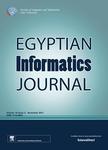版权所有:内蒙古大学图书馆 技术提供:维普资讯• 智图
内蒙古自治区呼和浩特市赛罕区大学西街235号 邮编: 010021

作者机构:Jouf Univ Dept Comp Sci Sakaka Saudi Arabia
出 版 物:《EGYPTIAN INFORMATICS JOURNAL》 (埃及情报杂志)
年 卷 期:2021年第22卷第1期
页 面:45-51页
核心收录:
学科分类:12[管理学] 1201[管理学-管理科学与工程(可授管理学、工学学位)] 0835[工学-软件工程] 0812[工学-计算机科学与技术(可授工学、理学学位)]
主 题:Emotion classification Conditional random fields Hidden markov model Gaussian mixture model
摘 要:The analysis of human emotions plays a significant role in providing sufficient information about patients in monitoring their feelings for better management of their diseases. Audio-based emotions recognition has become a fascinating research interest for such domains during the last decade. Mostly, audio-based emotions systems depend on the recognition stage. The existing model has a common issue called objectivity suppositions problem, which might decrease the recognition rate. Therefore, this study investigates the improved version of a classifier that is based on hidden conditional random fields (HCRFs) model to classify emotional speech. In this model, we introduced a novel methodology that will incorporate multifaceted dissemination with the help of employing a combination of complete covariance Gaussian concreteness function. Due to this incorporation, the proposed model tackle most of the limitations of existing classifiers. Some of the well-known features like Mel-frequency cepstral coefficients (MFCC) are extracted in our experiments. The proposed model has been validated and evaluated on two publicly available datasets likes Berlin Database of Emotional Speech (Emo-DB) and the eNTER FACE 05 Audio-Visual Emotion dataset. For validation and comparison against the existing techniques, we utilized 10-fold cross validation scheme. The proposed method achieved significant improvement under the p-value 0.03 for classification. Moreover, we also prove that computational wise, our computation technique is less expensive against state of the art works. (C) 2020 THE AUTHORS. Published by Elsevier BV on behalf of Faculty of Computers and Artificial Intelligence, Cairo University.